I’ve been visiting family on the central California coast, which has been wonderful. I always like going to other parts of the country to see what I can forage, and the temperature here is so mild that you can pretty much find edible or medicinal plants year round. Late spring and summer is when the coastal roadsides are covered with a tall yellow flower that smells of licorice. At first I thought it was some sort of anise, but upon further investigation I discovered it was wild fennel. How exciting is that? Foraging for wild fennel is easy on the west coast, because it is so widespread.
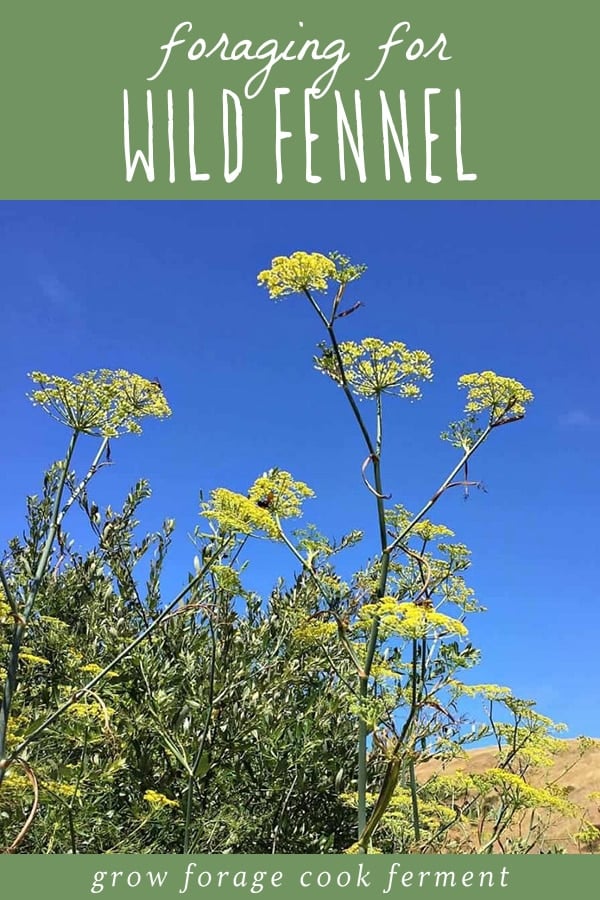
Want to save this post for later?
Wildcrafting Weeds
If you want to learn more about the edible and medicinal weeds that surround us and how to use them, check out my eBook: Wildcrafting Weeds: 20 Easy to Forage Edible and Medicinal Plants (that might be growing in your backyard)!
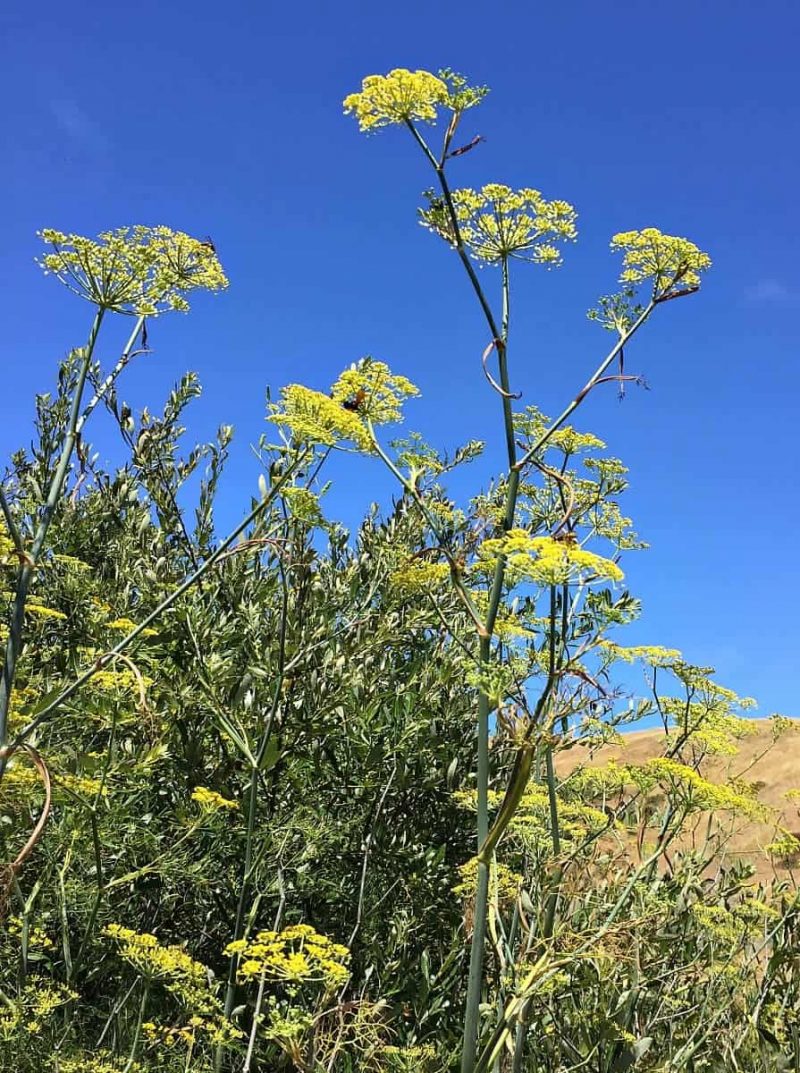
About Wild Fennel
Wild fennel is native to the Mediterranean, but has become widely naturalized in many parts of the world.
It is considered an invasive plant, so please harvest and use as much as you want! It is often found along roadsides or disturbed areas, and is especially prevalent on the California coast.
It’s a very tall plant in the carrot family with an umbel type flower similar to dill, coriander, and caraway.
Fennel flowers are beneficial insect attractants, so having them around isn’t all bad. These flowers that I photographed were absolutely covered with many different species of bugs and bees.
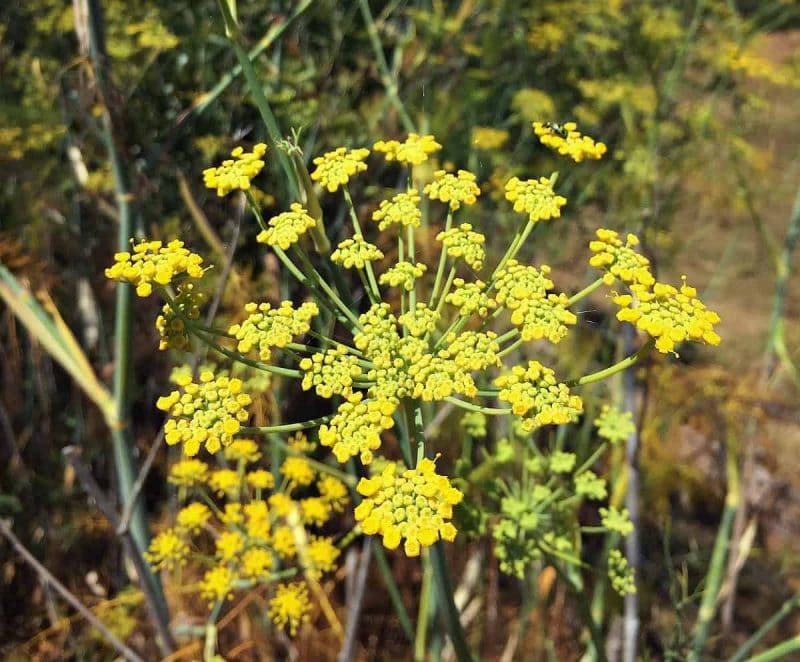
How to Identify Wild Fennel
Wild fennel is pretty easy to positively identify as its licorice like smell is unmistakable.
The stalk also looks just like what is attached to a fennel bulb that you would buy at a grocery store or farmer’s market, with all of the feathery fronds.
Unfortunately wild fennel does not produce an edible bulb, but it does have the fronds that can be used in dishes or as a garnish.
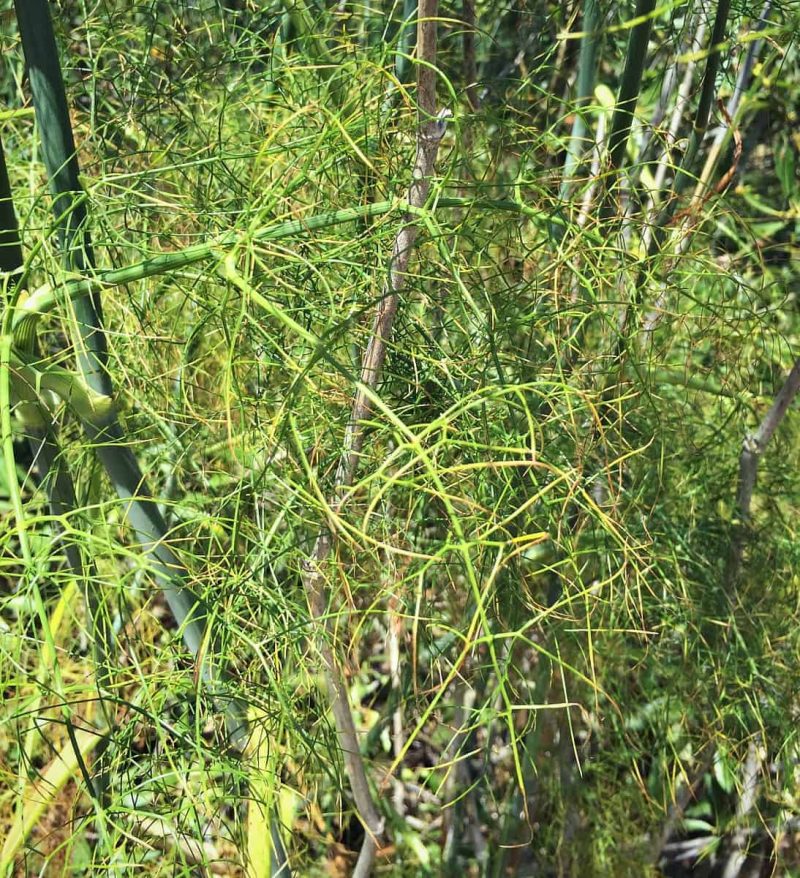
I collected a few flowers and let them dry.
Wild fennel pollen has become a popular ingredient these days, and while it is a bit tedious to collect, a little goes a long way.
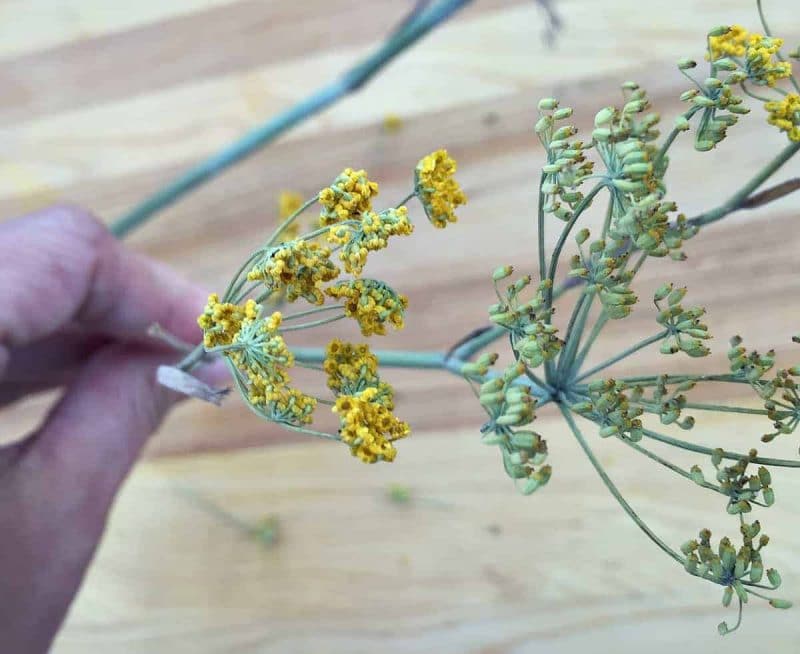
The seeds are nearly identical to dried fennel seeds that you can buy in the store in the spice department.
The immature green seeds are even tastier than their cultivated counterpart, as they are a bit softer on the teeth and more flavorful.
You can by all means collect the seed in any stage of its development for use in food, however.
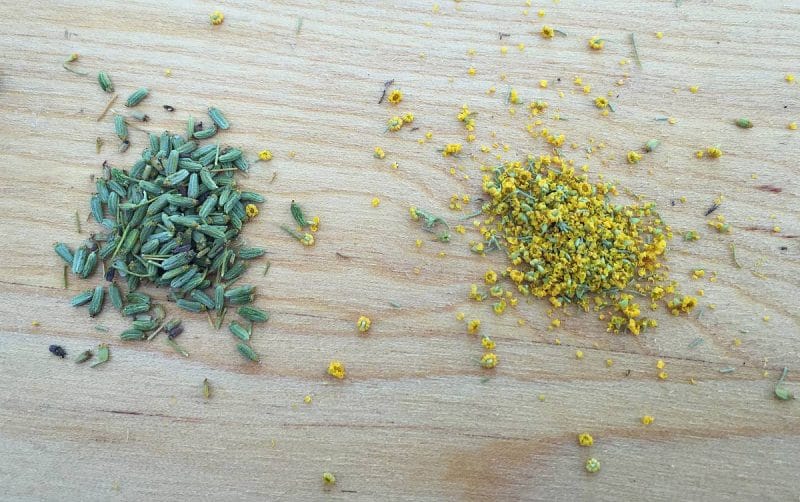
Uses for Wild Fennel
Fennel has some great medicinal uses.
It is primarily used as a post meal digestive aid, and is good for heartburn, gas, bloating, and regulating appetite. Nibble on the seeds after a big meal, or brew up some fennel tea.
I made a delicious dandelion and fennel kombucha recently that has become one of my favorites!
Here are some more great articles on wild fennel:
- Wild Fennel from Eat the Invaders
- Cooking with Wild Fennel from Hunter Angler Gardener Cook
- Harvesting Wild Fennel Pollen from Garden Betty
Have you ever seen wild fennel growing?

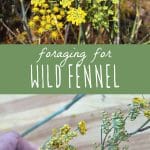

Seems great there are mountains of the stuff at the local dump. Which they got no idea what do do with the stuf
Collected some seeds a few years ago and grow it in my yard for addition to floral arrangements and the aroma…now I know that it’s edible , think I will add to salads .
I grew up in San Diego, CA and wild fennel grows in the canyon valleys all around. I used to chew on the stalks as a kid…we called it the licorice plant. Since I have collected seeds and grown the fennel in Pennsylvania and does very well here.
Does it grow in the southeast like Mississippi or Alabama? I have read that it has extraordinary nutrient density.
I have seen it in Alabama on the side of the roads.
I can’t be sure by the pictures but it looks an awful lot like a weed I’ve heard called “cow parsnip,” which when you get the sap from that plant on your skin and that skin is exposed to the sun, you get severe and painful blistering that lasts for weeks. (I know from first hand experience…just google “cow parsnip blisters”…ouch!) Make sure you know what you’re actually harvesting!
Yes, they are in the same family. Wild fennel smells very much of anise or licorice, so that is a great way to identify it!
Yes! Great point you made there. We have cow parsnip as well here in Maine! Its so widespread the state actually was making PSA’s about how to ID it and how/when to destroy it safely, so that people could potentially keep it out of their yards and to help slow the spread. (they recommended keeping skin fully covered, and yanking straight up to get roots and all, before the seeds can form and spread). But we also have Water Hemlock (all parts of it are super poisonous of course), various Elderberry’s, Queen anne’s lace, yarrow and a few other plants that could also easily be mistaken for one another, and almost all of them grow rampant here. Needless to say, im keen to freshen up my ID’ing skills when it comes to this variety of look alike’s. So thanks for the friendly reminder. I wouldn’t want blisters from those bad boys. ooph!
Dont confuse wild fennel with wild parsnip.
I discovered it also growing wildly along the beaches of Vancouver Island BC Canada. I too was waiting for the bulb, now I know it can be used and is not poisoneous, I put it in my morning smoothy. Thanks.
Great! I found some Wild Fennel near our home last year, and could not find any good resources on how to forage/use it! Thanks!
I have a ton of wild fennel growing in my yard! I wasn’t sure what to do with it without the bulb. Thanks for telling us about the flowers–now I know what to do with the seeds. One question: Can you use the stalk in salads or cooking like you would normally use a bulb of fennel? I keep waiting for the bulb to appear, and now that I understand I probably have wild fennel, I will stop looking. :-)
I haven’t ever tried that because I always assumed that it would be really tough and stringy. But, it may be more tender in spring. Give it a try and let me know!
I live in Spain, where I know that small sprigs of wild fennel are used as a spice/flavoring in Lentil Soup and in brine for curing olives.
Great post! I don’t love the flavor of fennel, but encourage it in my garden because the bees love it. Plus, its the host for the Swallowtail butterfly!
I am curious about how I can use it as a digestive aid. Interesting post…thanks, Colleen